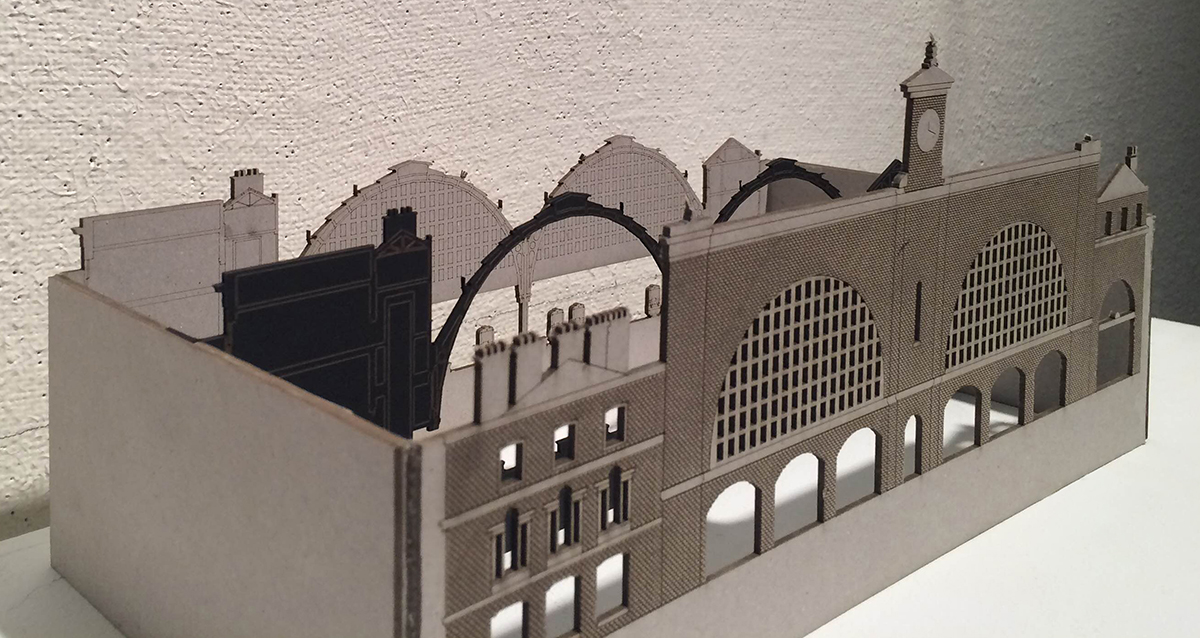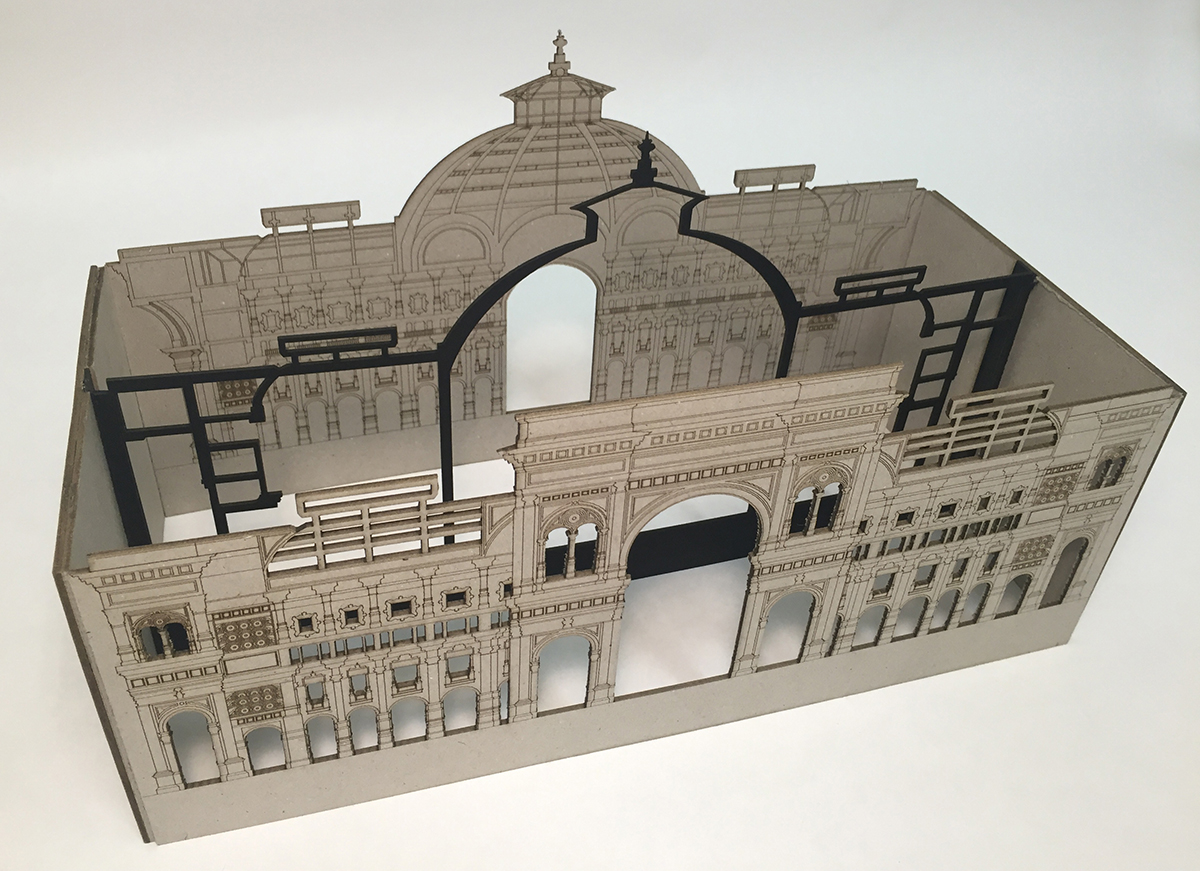From the Classroom – Seeing in LAYERS : Victorian ‘Tunnel-book’ Models

Working as an Architect for Colleges and Universities and as a Professor of Architecture allows me to experience classroom, department, and university communities first-hand – and to participate in their evolution.
Notes from Teaching History and Theory of Architecture, 1850-1932, at Norwich University, Fall 2015 –
On making physical models:
Artist Andrea Dezsö introduced me to the concept of the Victorian Tunnel Book during a workshop at the Haystack School of Arts and Crafts Summer Conference 2015.
I brought this diorama concept into the architecture classroom at Norwich University in Fall 2015. Students worked all semester on a single large civic or commercial building from the period 1850-1932. They found archival drawings and drew the building’s facade, section, and interior elevation in CAD – then laser-cut the pieces and organized them in a foldable ‘tunnel book’ style diorama. The dioramas show section cuts and present the section cuts in a three-dimensional form.
Exhibited together, the models show the students the relative scale of these large buildings and – accompanied by annotated as-built drawings also produced by the students – reveal their construction.
Pictured models are by students Nate Williams (Lewis Cubitt – King’s Cross Station – London – 1852) and Katarina Wabrek (Giuseppe Mengoni – Galleria Vittorio Emanuele II – Milan, Italy – 1863).

